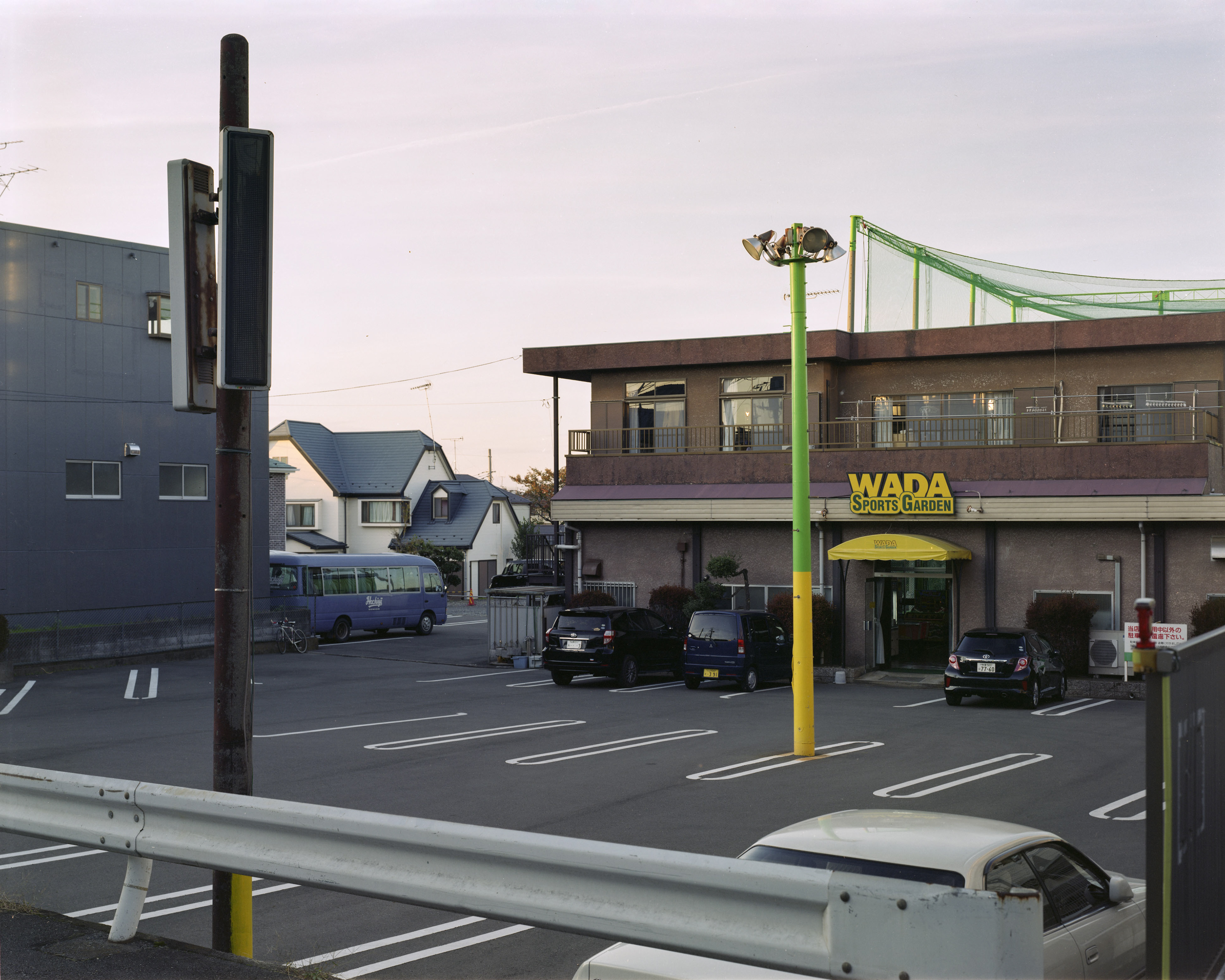
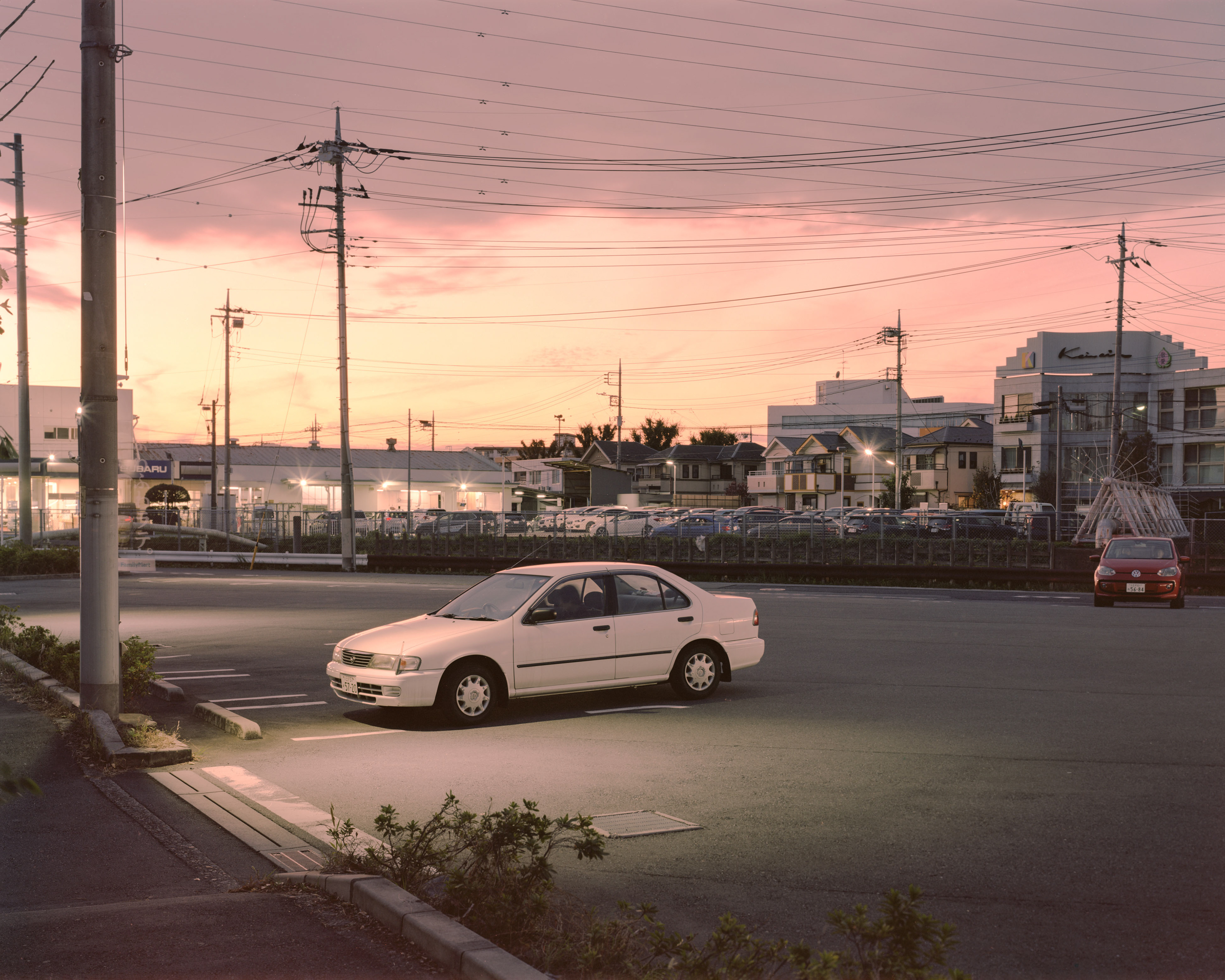
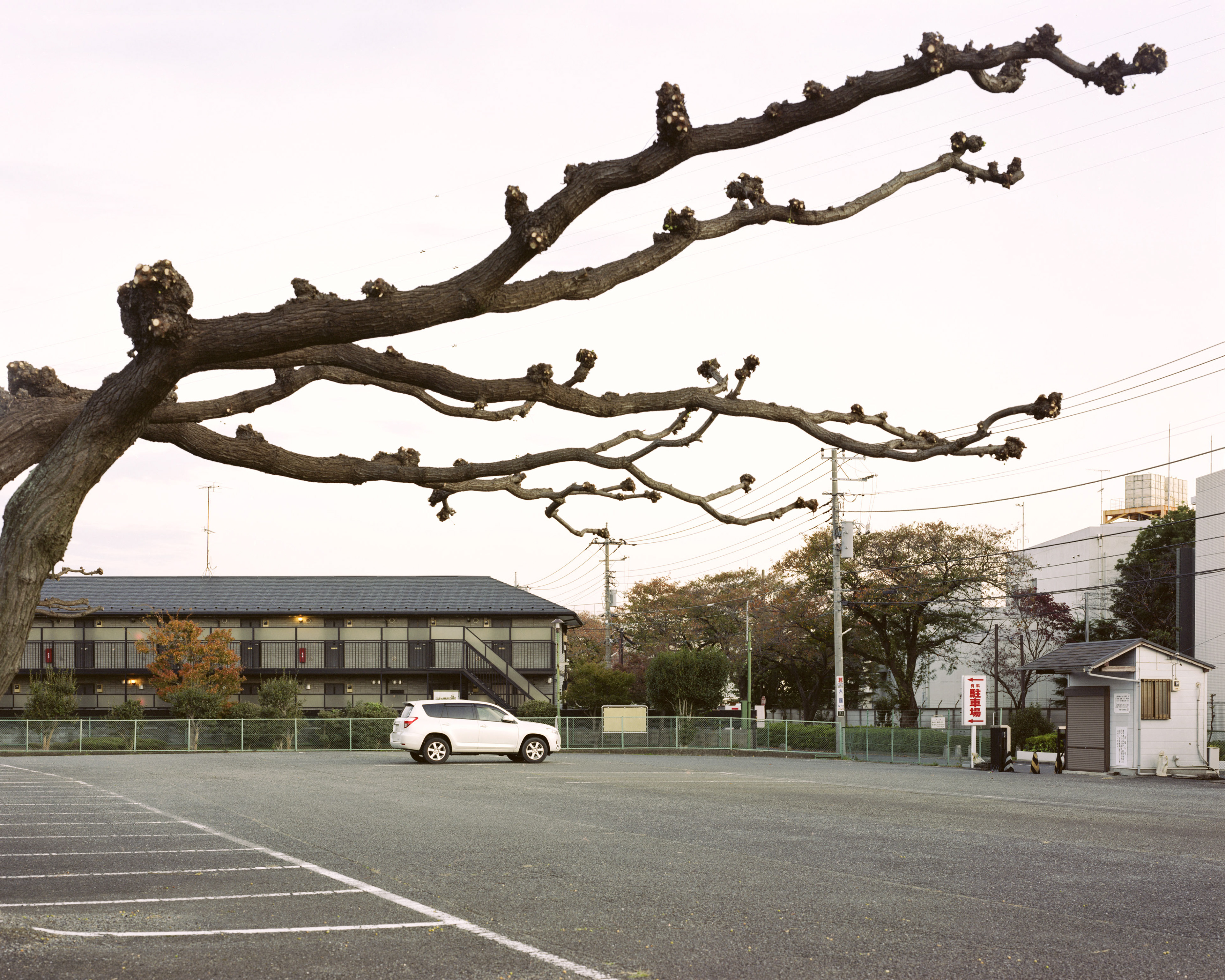
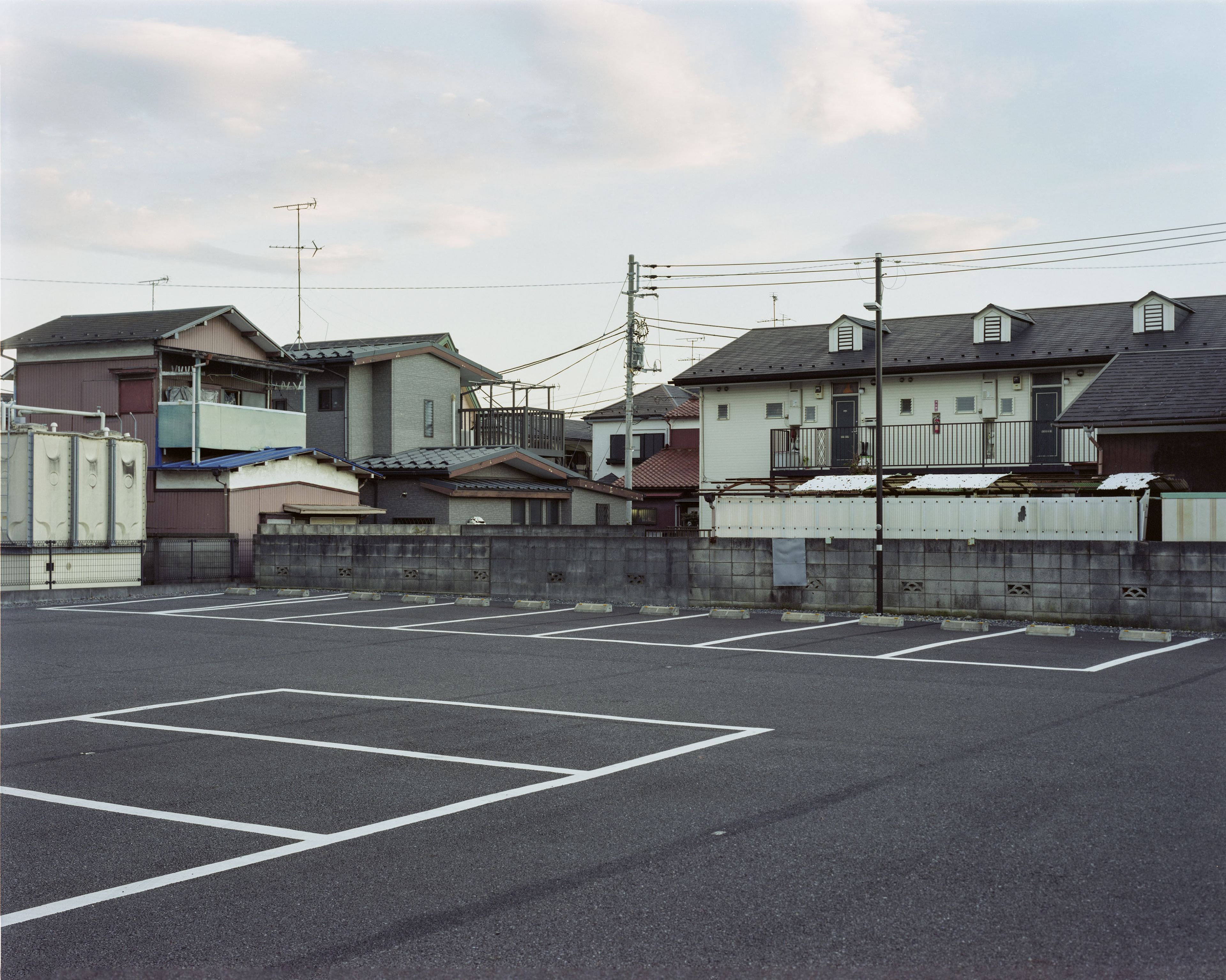
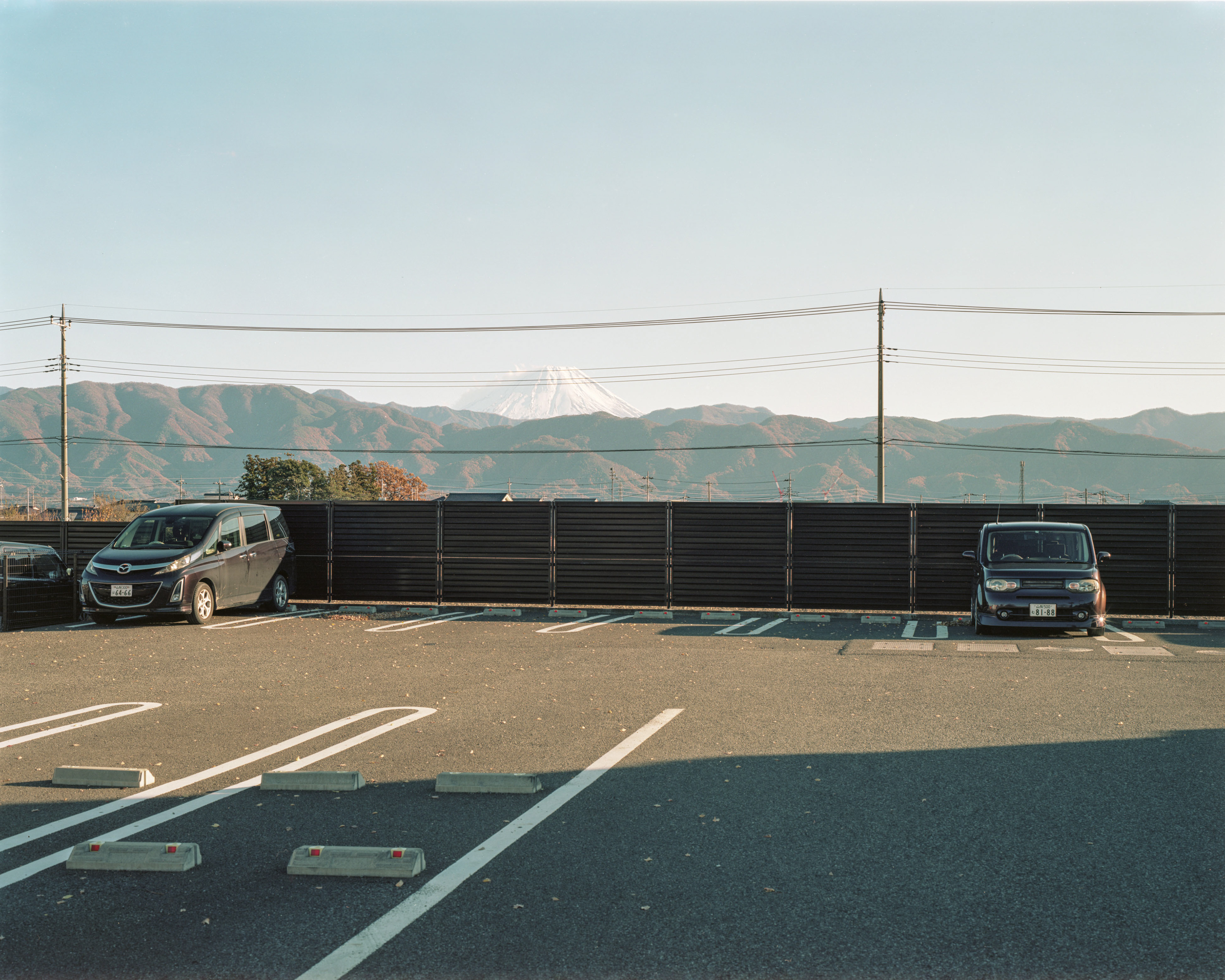
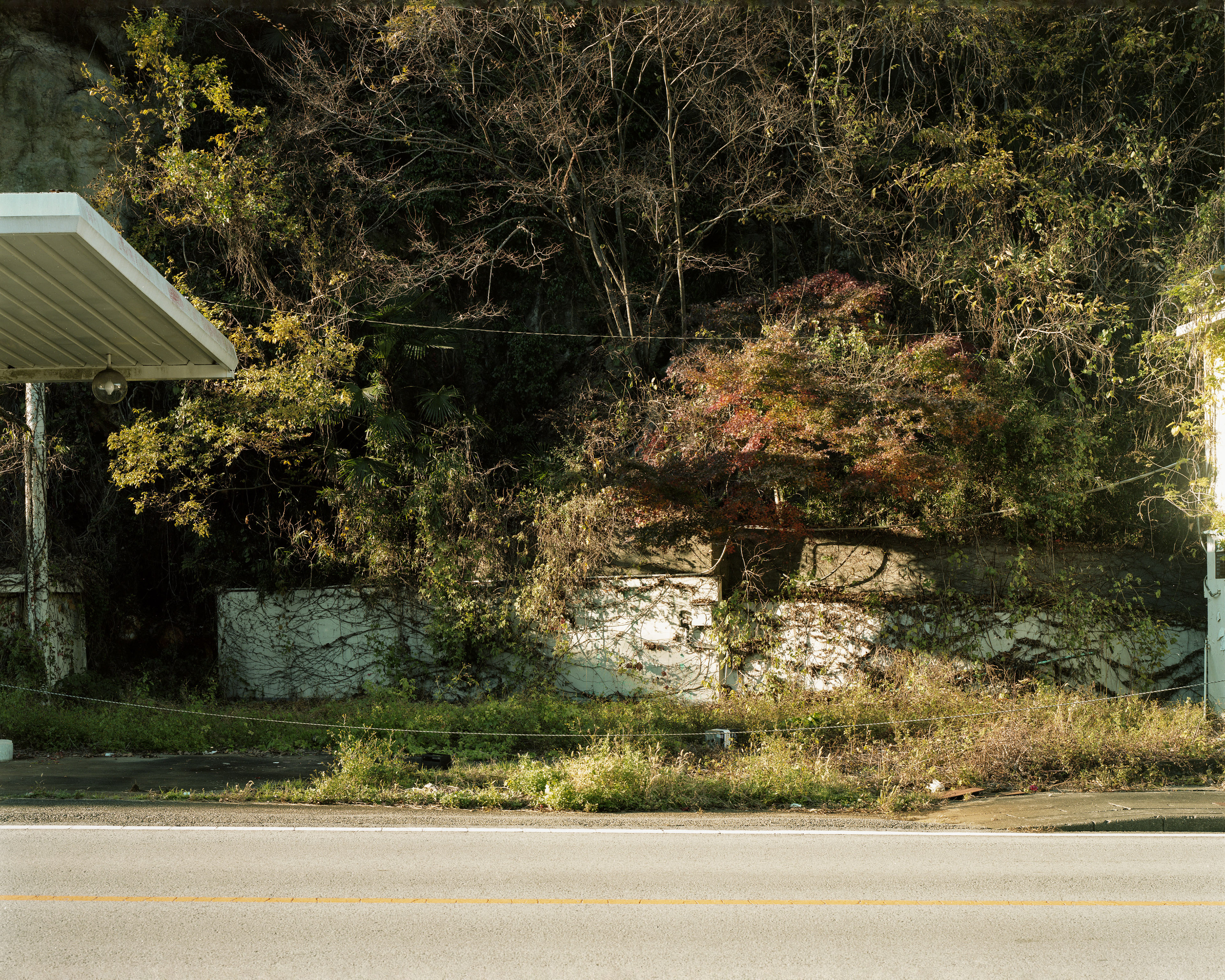
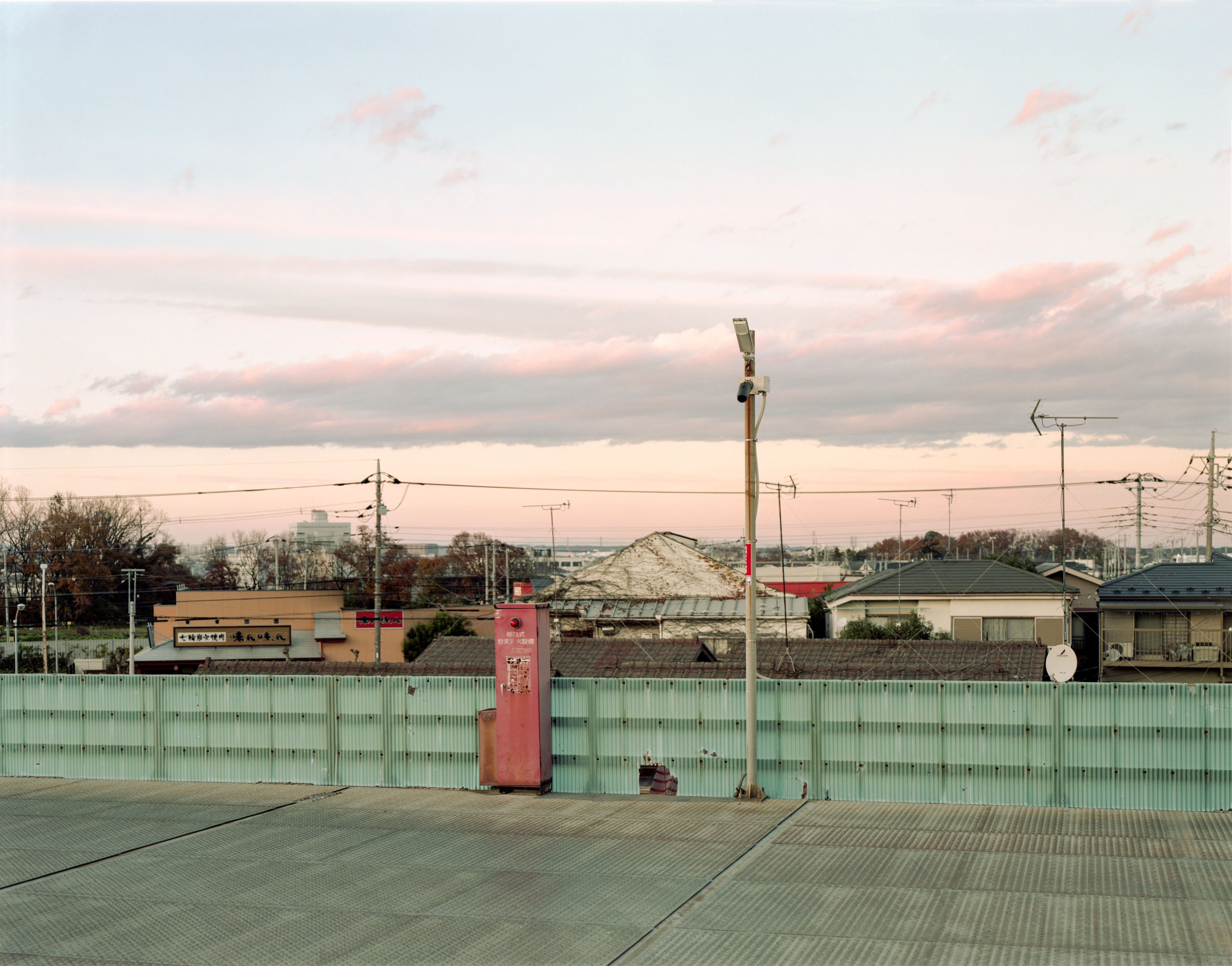
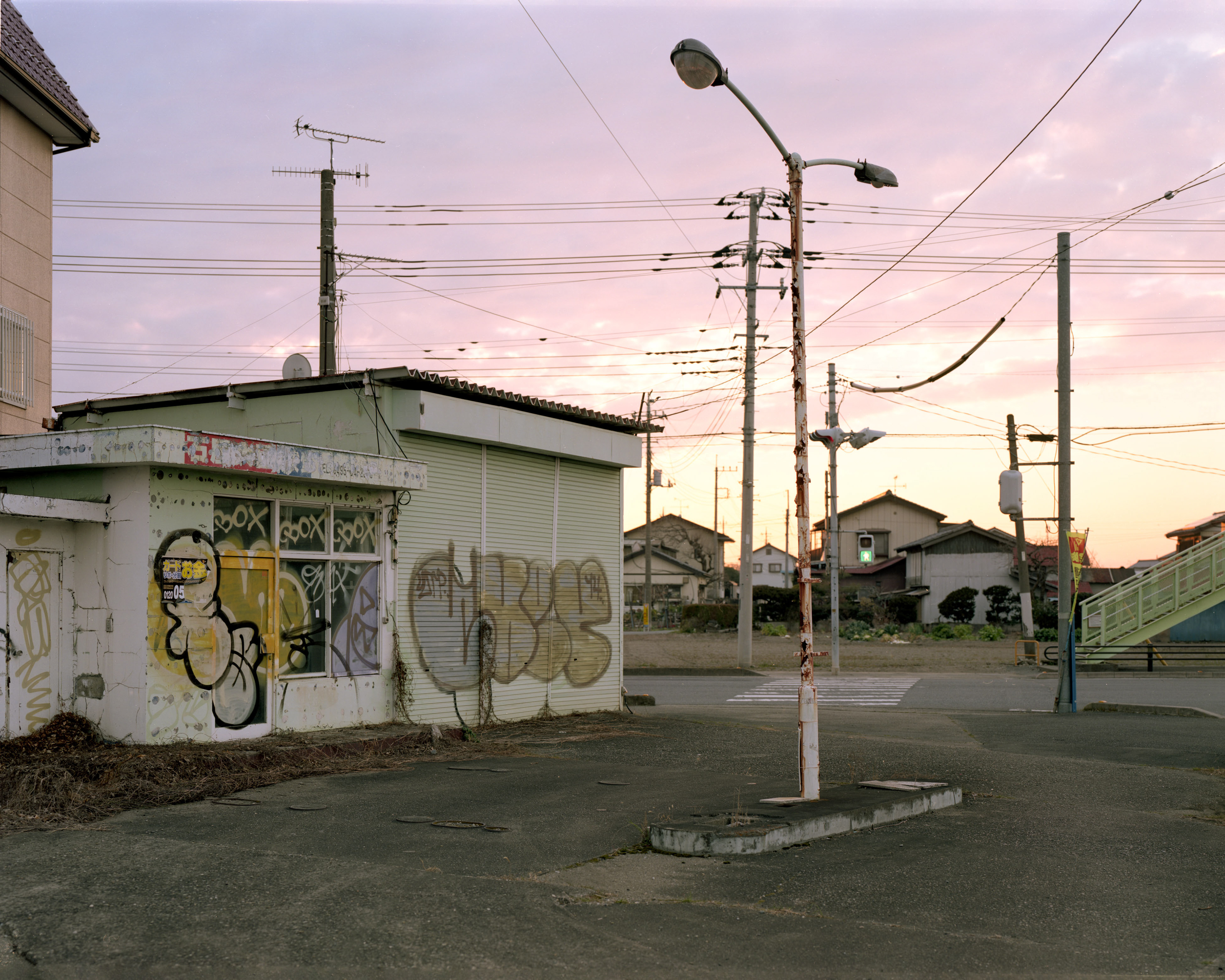
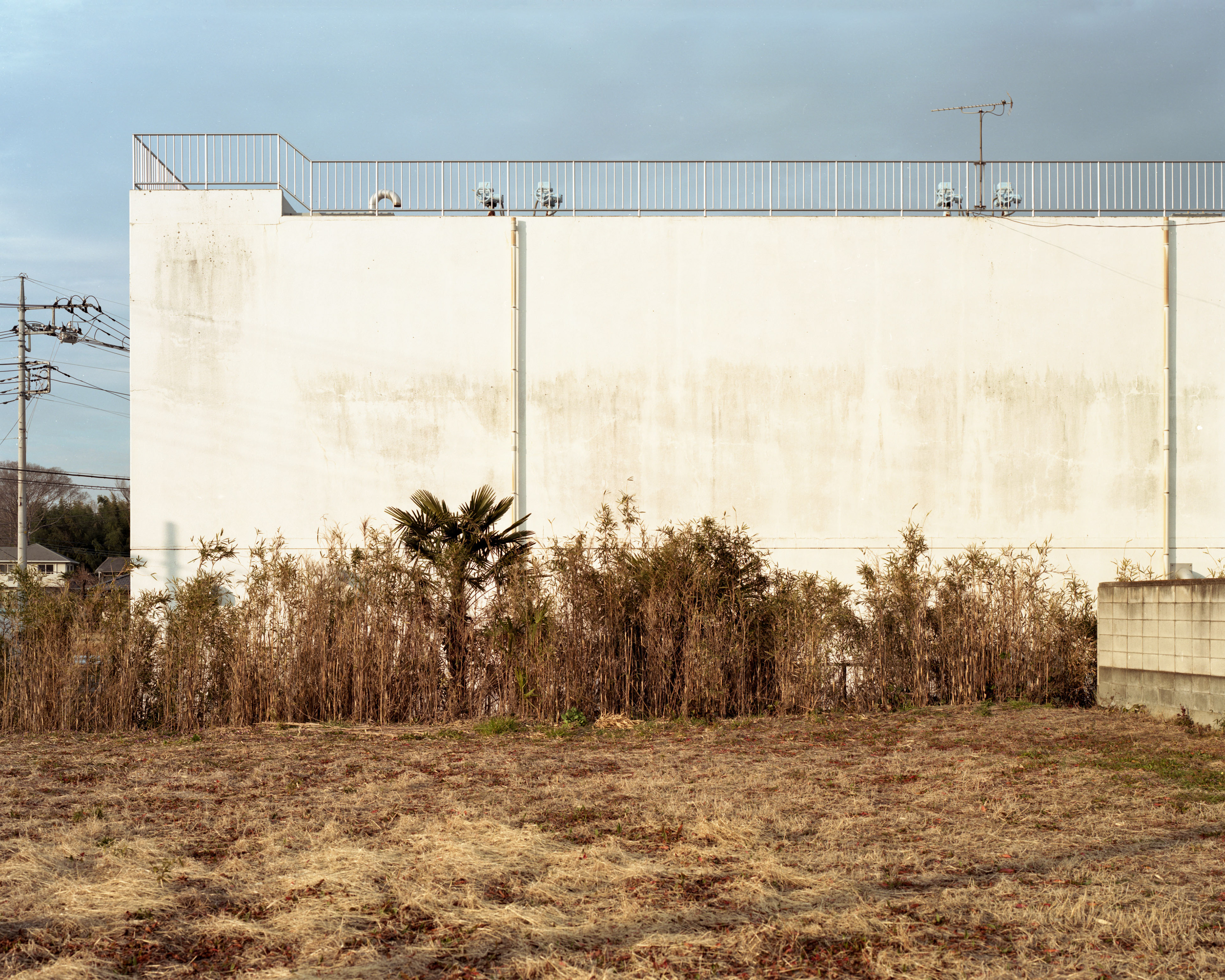
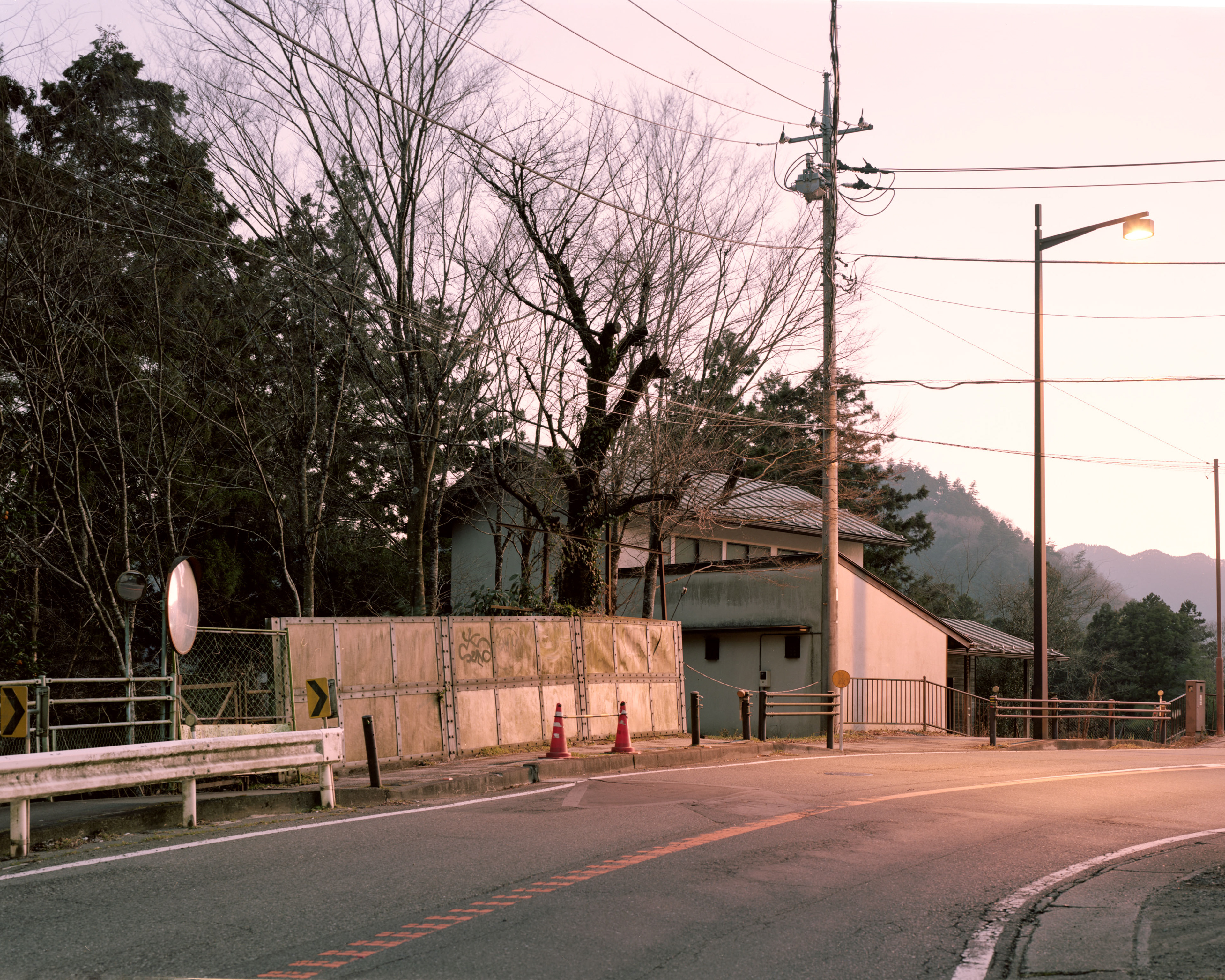
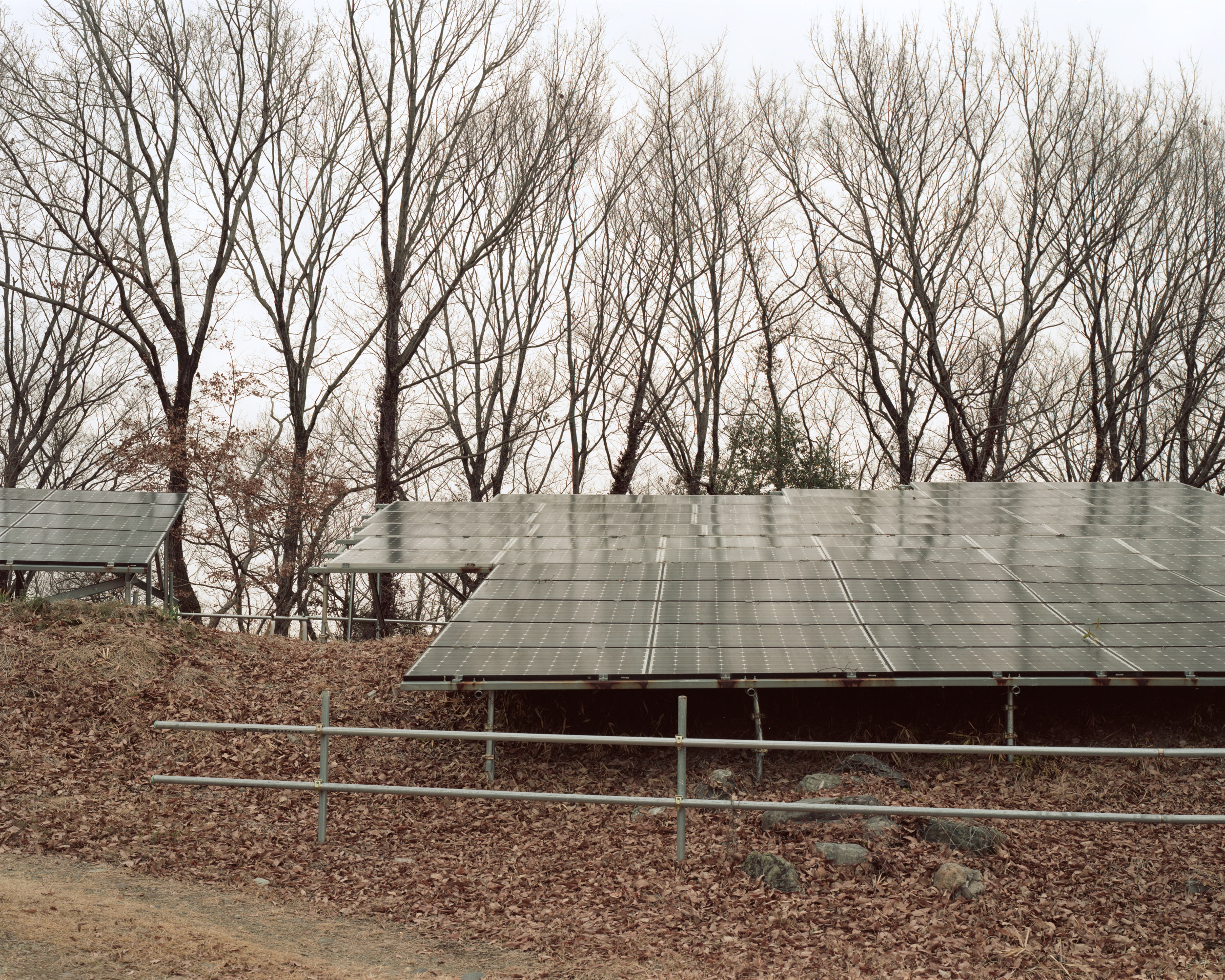
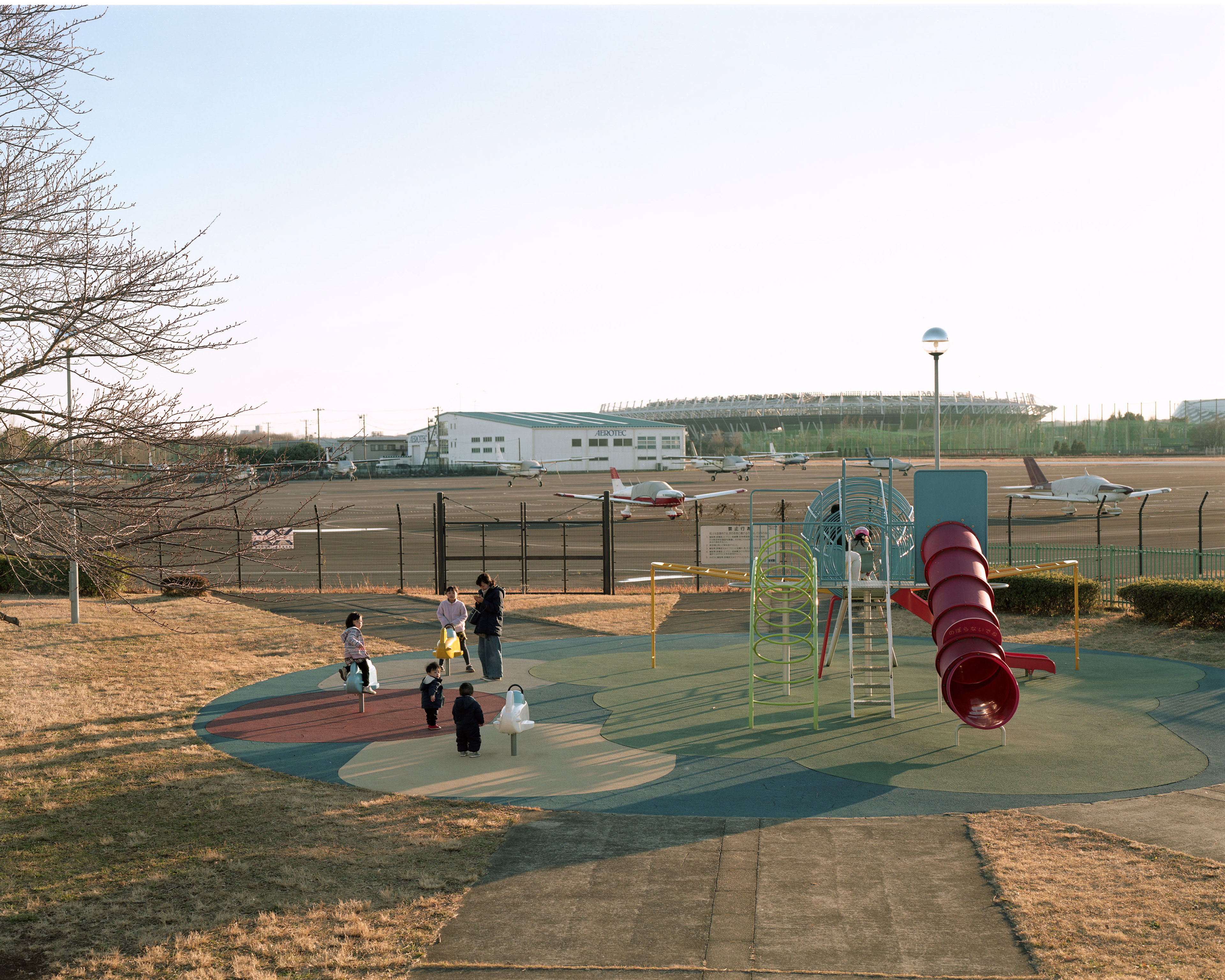
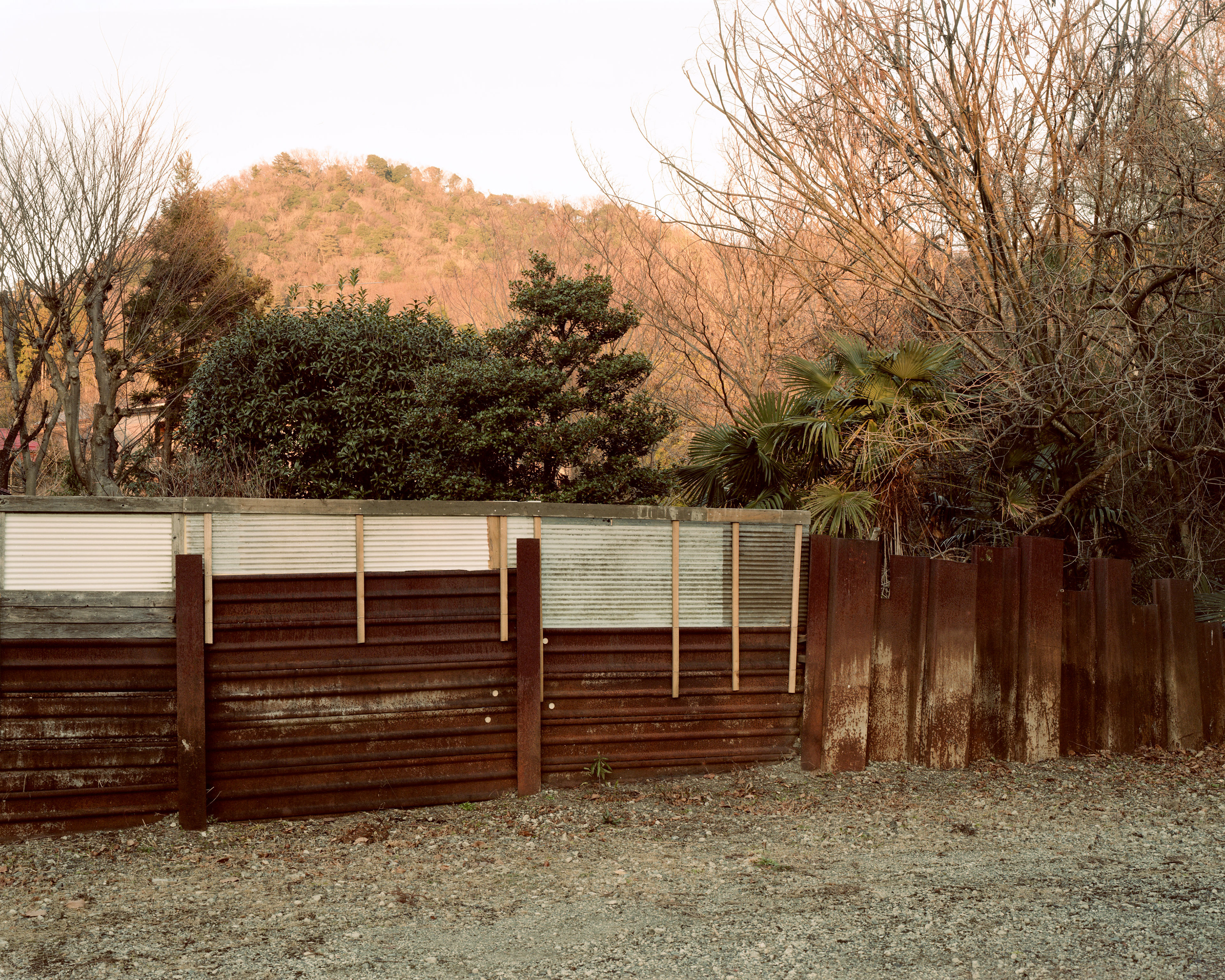
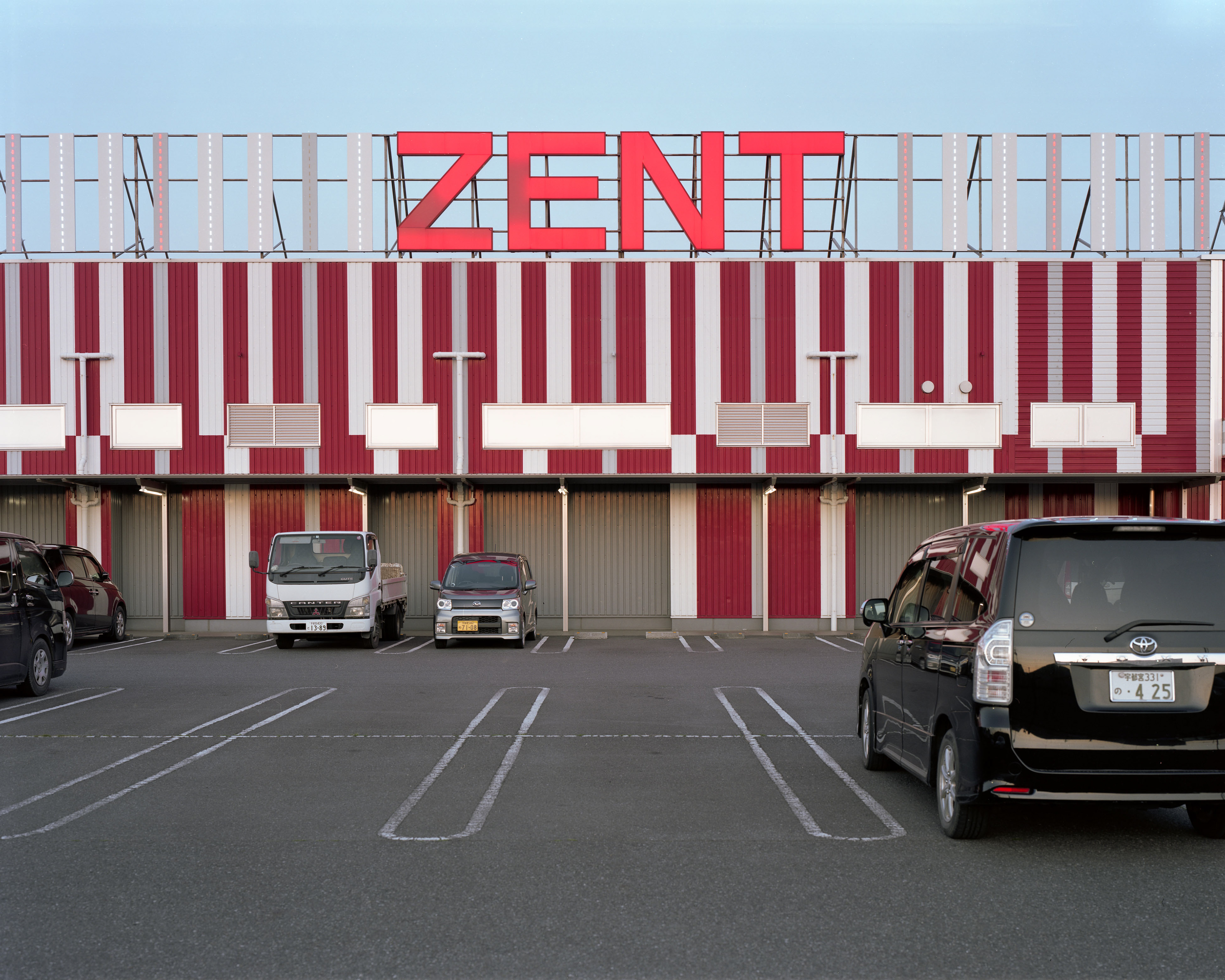
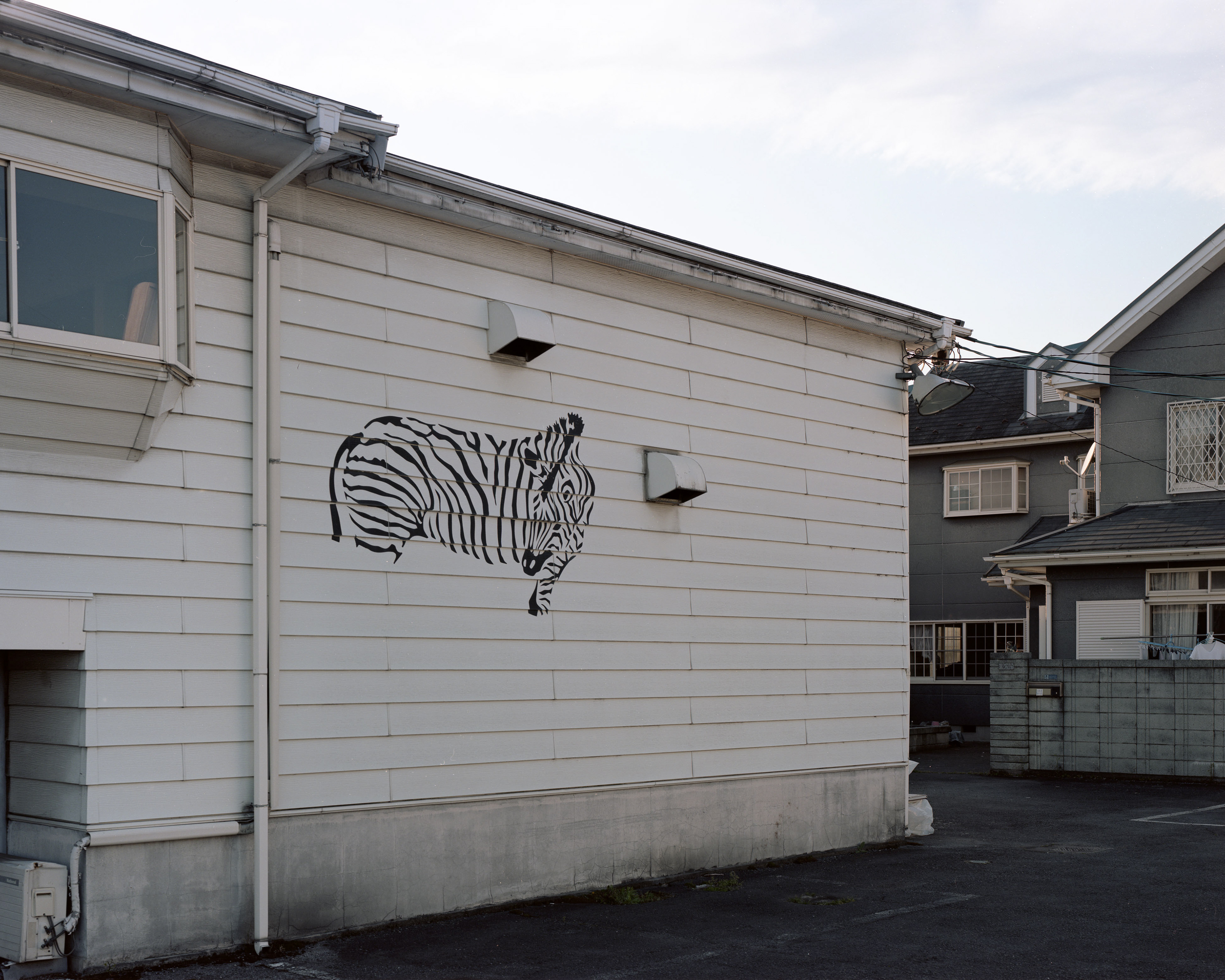
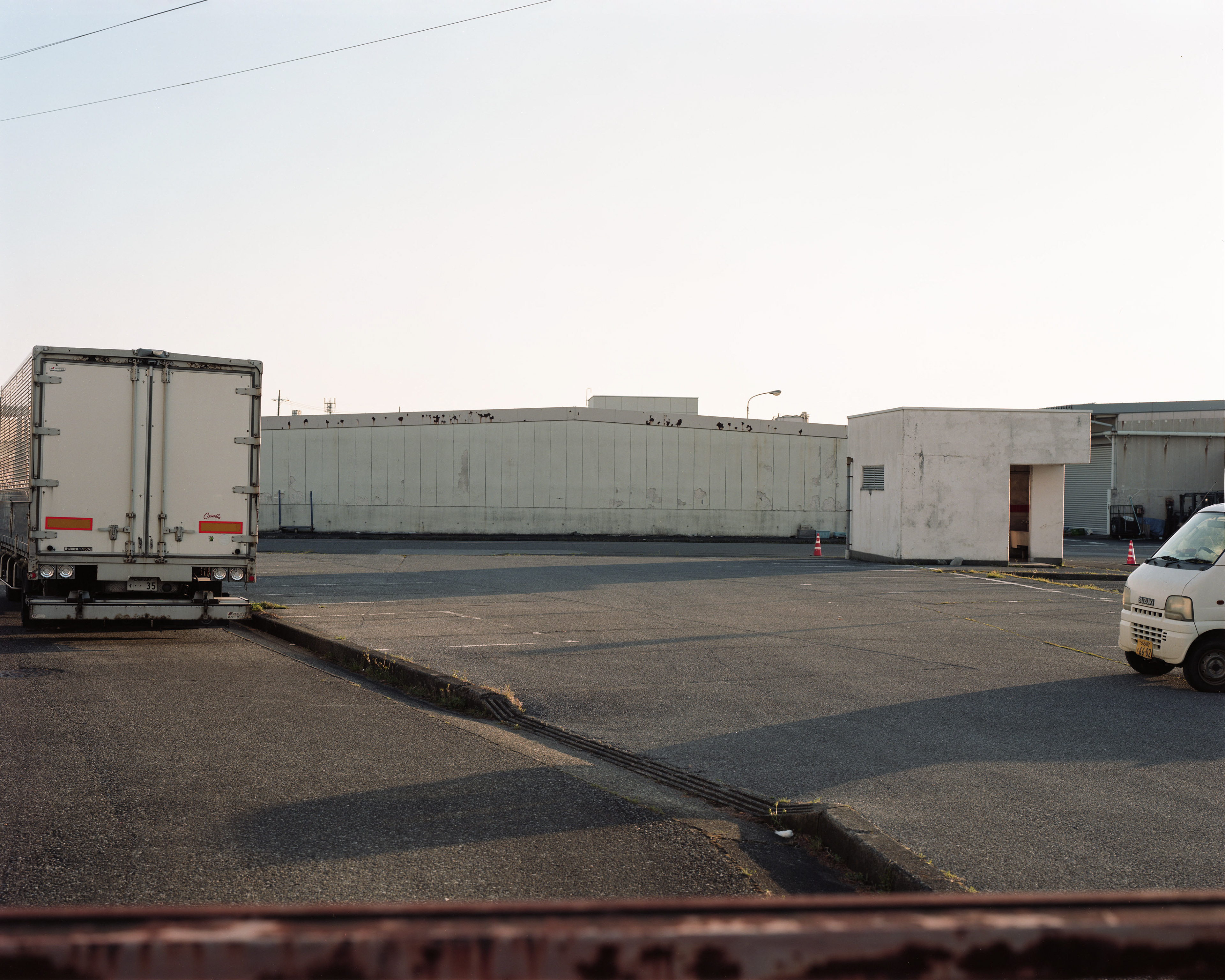
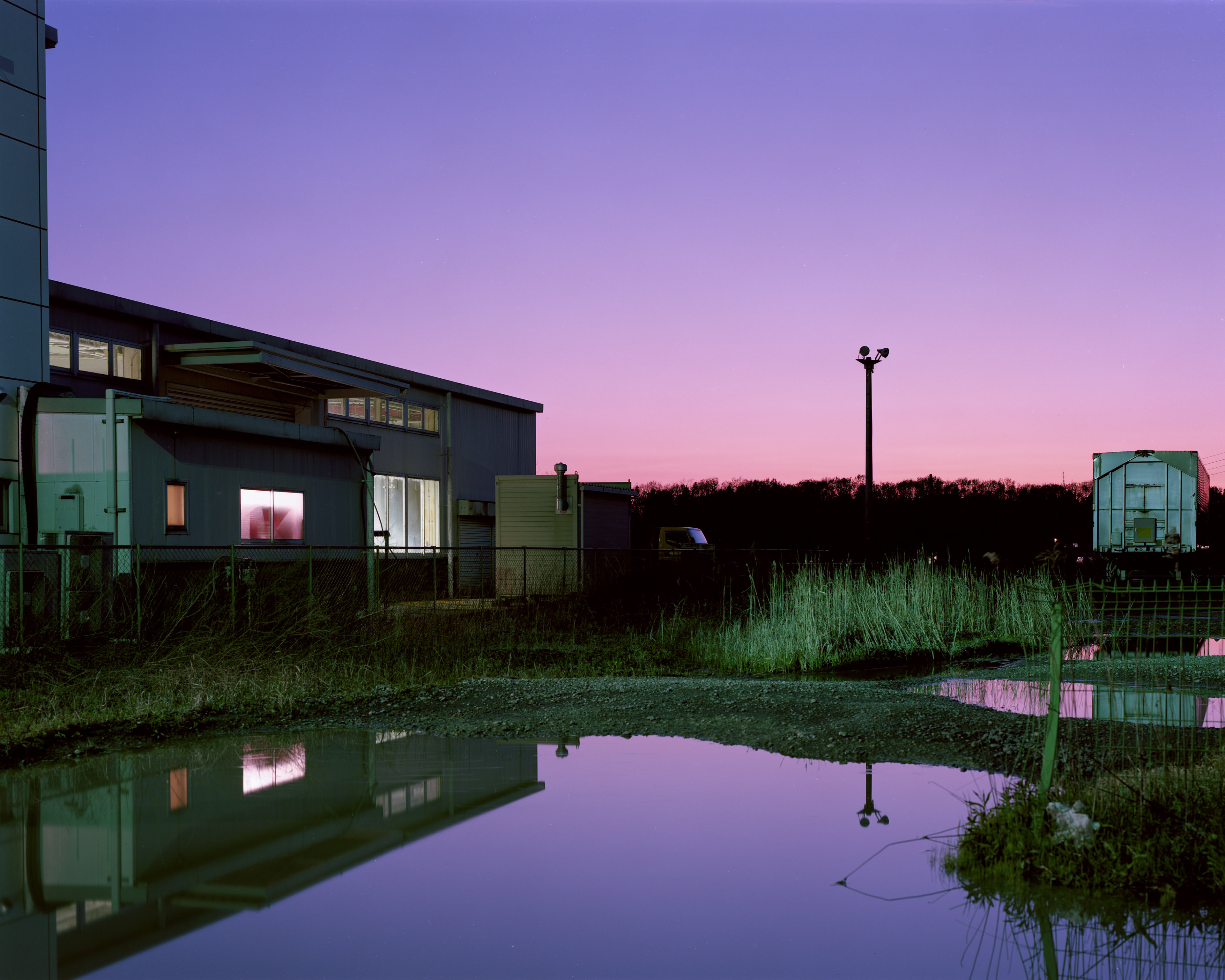
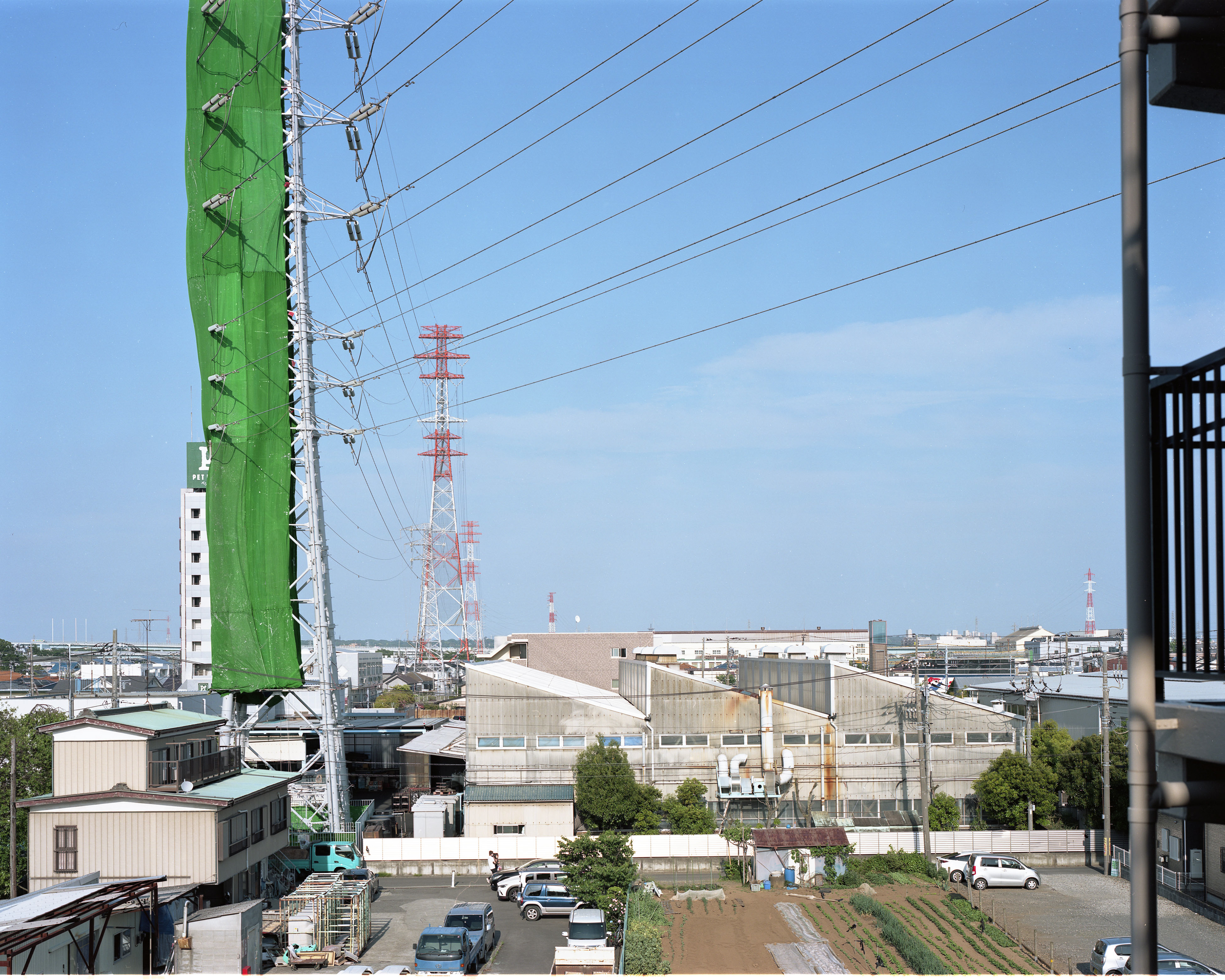
Parking Lot
This photographic series captures the landscape of unmanned parking spaces scattered throughout contemporary Japanese cities. The rapid proliferation of coin-operated parking lots, particularly around Suruga Station, reveals a set of contradictions that exceed questions of mere quantity. The issue is not simply that there are “too many” parking lots; rather, it is that urban space is being systematized without any serious attempt to interpret its social demands or spatial needs. As a result, the unique characteristics of local communities, the diversity of everyday life, and even the continuity of historically layered streetscapes are being erased. Space is reformatted into a generic template, and landscapes are fragmented under the banner of convenience. This condition—what might be called a form of infrastructural overreach—strips cities of their individuality and our lives of their embodied, sensory dimension.
These sites, uniform in appearance and composed of asphalt, white lines, machines, and numbered slots, are functionally optimized yet fundamentally depopulated. They are designed with the assumption of human presence, yet their operation is based on the systemic exclusion of human interaction. In this sense, the work employs photography not merely as a medium of observation, but as an apparatus of relation—turning its gaze toward the very places where social relation has been structurally withdrawn.
What these images make visible is a symbolic shift in the structure of contemporary urban space—a shift toward what anthropologist Marc Augé has termed the “non-place.” These are spaces designed for transient and anonymous use: spaces without historical memory, without trace of their users, defined only by transit and function. Users pass through momentarily, leaving no relationship behind. Owners, operating remotely, never appear on-site. Such spaces are not situated in a specific “here,” but are instead reproduced endlessly as interchangeable and placeless modules. The photographic series presented here exposes the aesthetic manifestation of this logic—the rendering visible of how non-places have become normalized within the urban fabric. The silence of the images is not emptiness, but a deliberate visualization of how this spatial condition has taken hold.
In contrast to the rigidly partitioned institutional spaces of the Fordist era—characterized by mass production, suburban zoning, and single-use infrastructure—urban design since the 1980s has favored flexibility, fluidity, and instant adaptability. Post-Fordist space operates through provisional land use, ease of removal and redeployment, and disembodied management. Coin-operated parking lots are emblematic of this logic: properties are managed remotely, users interact with machines rather than people, and payment is prioritized through speed and automation. But behind this surface of “order” and “efficiency” lies a profound flatness. No one lives there, no one works there, no one encounters another. The machine runs by itself, silently accumulating profit for an absent owner while rendering the user invisible. These are economic devices designed on the premise of human absence—anonymous infrastructures veiled as public utility.
Semiotically, parking lots are saturated with signs of modern urban ideals: convenience, rationality, cleanliness, freedom. Yet in reality, they manifest the symptoms of overproduction, dehumanization, and the fragmentation of visual and social continuity. What is at stake here is not the function of the parking lot, but its transformation into a symbolic apparatus—a marker of ownership, management, and systematized abstraction. Urban space, following the logic of signification rather than use, becomes a code—a semiotic structure more than a lived environment. The photographs critically reveal the hollowness, or in some cases the excess, of this system, using the aesthetics of subdued twilight tones and persistent human absence to emphasize the disjuncture between space, code, and the body.
This project thus functions as a photographic study of disconnection—between landscape and life, infrastructure and experience, visibility and value. Quiet, precise, and composed, the images resist spectacle and instead embody a form of spatial reflection. Their silence is not a lack of content, but a deliberate medium through which to expose the invisible logics of institutional violence and social estrangement. The photographs invite us not only to see what is there, but to confront what has been systematically removed.
パーキングロット
無人の駐車スペースの風景を撮影したシリーズである。
駐車場の乱立は、 都市計画的観点から見ても矛盾が多い。 「駐車場が多すぎる」のではなく、 都市空間の読み取りがなされず、需要の実態が計測されないままに空間が制度化されていることが問題なのだ。 それにより、地域の特性や生活の多様性、あるいは歴史的な町並みの連続性が断ち切られる。 空間は一様なフォーマットに変換され、景観は「使いやすさ」の名のもとに切り刻まれる。 この状況は、ある意味で「便利さの暴走」であり、 都市の顔から個性を奪い、私たちの生活から身体的実感を奪う構造である。
空間的には一様、機能的には整備され、アスファルトと白線、機械と番号で構成されるそれらの場所は、
人の気配を前提としながら、徹底して人間性を排除した構造になっている。
人の気配を前提としながら、徹底して人間性を排除した構造になっている。
作品は、写真を「関係の装置」として用いながら、
まさにその関係が剥奪された場所を見つめ返すメディア的実践である
まさにその関係が剥奪された場所を見つめ返すメディア的実践である
この風景は、現代都市が直面する空間構造の変化を象徴するもの、つまり、非場所と考えている。
それは一時的かつ匿名的な利用を前提とした空間を指す。
それは、共同体的な歴史や記憶を持たず、ユーザーの痕跡も残さず、
「通過」と「機能」だけによって構成される空間である。
「通過」と「機能」だけによって構成される空間である。
利用者は一時的に滞在し、個人的な関係を結ばず、空間との相互作用をほとんど持たない。
所有者は遠隔におり、対面的関係は存在しない。
空間は「ここ」ではなく、「どこでもよい場所」として量産される。
所有者は遠隔におり、対面的関係は存在しない。
空間は「ここ」ではなく、「どこでもよい場所」として量産される。
作品が映し出すのは、「非場所の景観化」である。
写真は一見すると何も語らないが、それこそが「非場所的空間」が現代都市にどう定着したかを可視化している。
写真は一見すると何も語らないが、それこそが「非場所的空間」が現代都市にどう定着したかを可視化している。
高度成長期における「フォーディズム(大量生産・大量消費)」の空間は、
工場労働・郊外住宅・ショッピングモールなど、機能別に分割された硬直した制度空間であった。
工場労働・郊外住宅・ショッピングモールなど、機能別に分割された硬直した制度空間であった。
それに対し、1980年代以降の「ポスト・フォーディズム」期には、
柔軟性・流動性・即応性を重視する空間設計が支配的になる。
柔軟性・流動性・即応性を重視する空間設計が支配的になる。
土地は暫定的に運用され、撤去・変更が容易。
運営者は遠隔管理で、空間に居る必要がない。
使用者は自動決済を使い、契約性よりも「即時性」が優先される。だが、その「整然さ」と「効率性」の背後にあるのは、空虚な平板性である。誰も住まず、誰も働かず、誰とも対面しないまま機械が回る。 所有者は収入を得るが、借り手の姿も見えない。 それはまさに、人間の不在を前提とした経済装置=匿名化されたインフラの風景である。
運営者は遠隔管理で、空間に居る必要がない。
使用者は自動決済を使い、契約性よりも「即時性」が優先される。だが、その「整然さ」と「効率性」の背後にあるのは、空虚な平板性である。誰も住まず、誰も働かず、誰とも対面しないまま機械が回る。 所有者は収入を得るが、借り手の姿も見えない。 それはまさに、人間の不在を前提とした経済装置=匿名化されたインフラの風景である。
駐車場は記号論的に「便利・合理的・都市的・清潔・自由」の記号で満たされている。
しかし現実には、過剰供給・非人間性・景観の分断・孤立といった問題が噴出している。
しかし現実には、過剰供給・非人間性・景観の分断・孤立といった問題が噴出している。
ここで重要なのは、駐車場という制度空間が、
もはや交通や滞在のための“機能的場所”ではなく、「所有と管理の証」としての意味装置になっていることだ。
もはや交通や滞在のための“機能的場所”ではなく、「所有と管理の証」としての意味装置になっていることだ。
都市空間もまた、単なる機能的場所ではなく、「意味の体系(code)」に従って構築されている
あなたの写真は、そこにあるはずの意味の「空虚さ」あるいは「過剰さ」を、
夕方の色調・人間の不在によって批判的に可視化している。
同時に、空間と制度、経済と風景、記号と身体のあいだの乖離を写し出す写真である。
同時に、空間と制度、経済と風景、記号と身体のあいだの乖離を写し出す写真である。
写真は、静かで、冷静で、沈黙している。
だがその沈黙こそが、私たちが見過ごしてきた制度的暴力や社会的逸脱を映し出す。
だがその沈黙こそが、私たちが見過ごしてきた制度的暴力や社会的逸脱を映し出す。
